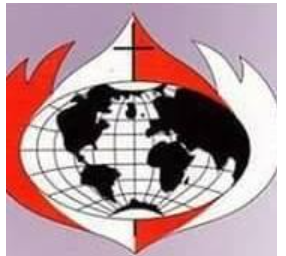A Movement of Fire: The Evangelical Journey of Methodist Church Nigeria, D-Line Diocese
The history of the Methodist Church is not just a history of growth—it is the story of a movement. A holy movement. A revival that stirred the soul of nations. Born in the fires of spiritual reawakening in England, Methodism became a divine wave that swept through continents, carrying with it the unmistakable scent of renewal, truth, and redemption.
And like a flame passed from torch to torch, that revival reached Nigeria.
A Foundation Rooted in Evangelism
Methodism arrived in Nigeria on the 24th of September, 1842, planting its first seeds as the premier Church in the then British colony. What kept those seeds growing—through colonial transitions, through civil unrest, through generational shifts—was not mere tradition. It was evangelism.
From its earliest years, the Methodist Church Nigeria advanced not by accident, but by conscious, strategic, Spirit-led evangelism. Revival was the root; evangelism was the wings.
In the 1970s, following the Nigerian Civil War, a new spiritual wind began to blow. A wind of hunger for deeper commitment to God swept through the land, and within Methodism, evangelically-minded believers began to rise. They did not just hope for change—they lived it. Nurture groups emerged. Witness groups took shape. Intercessory ministries sprang up, carrying the burden of national and ecclesiastical healing. And from this groundswell, a new identity began to form.
The Birth of the Evangelical Expression in Methodism
By the mid-1980s, it was evident that something divine was unfolding. In November 1985, a gathering of like-minded evangelical leaders gave rise to the National Congress of Evangelizing Methodists (NACEM), a platform born to coordinate and elevate the evangelical thrust of the church.
Not long after, in response to the heart cry of the Church for a unified evangelistic structure, the Methodist Evangelical Movement (MEM) was formally birthed at the 1989 Conference. Just as the Church was completing a critical process of re-unification and constitutional renewal, this spiritual wing became the arms and feet of revival within Methodism.
With it came more clarity, structure, and intentionality. A full-time Director of Evangelism was appointed. The first MEM seminar was held. A department was established—then housed in Sagamu, Ogun State. What began as a passion had now become a policy. What began in homes and fellowships had entered the corridors of conference resolutions.
The Rise of D-Line: Home of Evangelism
Amid this evangelical awakening, a powerful vision began to stir within the D-Line Circuit of the Methodist Church. This vision was not born from a desire for title or territory but from a burden to expand God’s Kingdom through intentional structures that could support revival.
At the time, the D-Line Circuit was composed of preaching stations and a few local churches. However, strategic leadership saw the need to meet constitutional requirements for the creation of a Diocese. Preaching stations were upgraded to full churches. Comprehensive development plans were drafted. Churches were visited, members interviewed, and structures proposed.
Eventually, the Circuit split into new administrative units—each designed to foster more localized and effective evangelism. Additional Circuits were created from within, while others joined hands from outside. The work of the Spirit had become institutionalized not to contain it—but to multiply it.
After a memorial was presented, and the ecclesiastical bodies deliberated, the creation of the D-Line Diocese was divinely approved—first at the Diocesan level, then at the Archdiocese, and finally at the National Conference. The Diocese of D-Line was born—not as a breakaway, but as a breakout. Not as rebellion, but as revival.
Today, from those humble roots, the Diocese now boasts 9 Circuits/Sections and 46 Worship Centres, a testimony to the fruitfulness of Spirit-led planning and evangelistic zeal.
From Department to Directorate
As Methodism in Nigeria continued to evolve, so did its understanding of mission. The once-called Department of Evangelism transformed into what is now the Directorate of Evangelism and Discipleship. This shift was not just semantic. It was strategic.
Recognizing that evangelism should not be a unit of the Church—it should be its heartbeat—the Church merged all arms, ministries, and expressions under one Directorate. Every action, every ministry, every outreach was now to be filtered through the lens of soul-winning and spiritual growth.
The Directorate was tasked with overseeing all spiritual activities and programs of the Church, from the grassroots to the national level. The Directorate has evolved, even its crest as it has adopted not one—but two logos: the old, a reminder of the path once walked; the new, a banner of the journey ahead.

Our Old Logo

Our New Logo
A Movement That Continues
The history of the Methodist Church Nigeria, especially as lived out in D-Line Diocese, is not merely a collection of events. It is the unfolding of a spiritual revolution. From the revival fires of the 18th century to the prayer altars of 1990s Nigeria, from Sagamu to Port Harcourt, from circuits to dioceses—the story remains the same: Methodism is a movement. A movement of the Spirit. A movement for the Gospel. A movement of Evangelism.
May God do it again in our day.
Amen.
